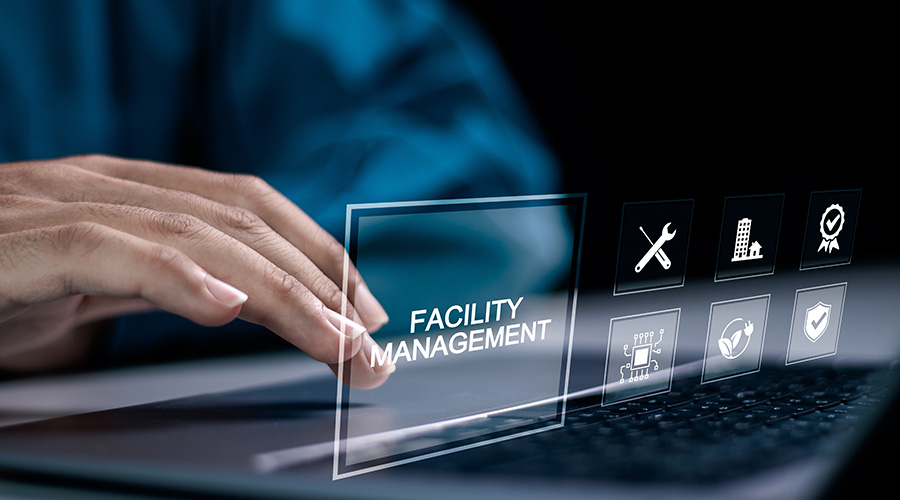Secrets of CAFM Success
For facility executives seeking the benefits of a CAFM system, the technology itself should be the last thing on the agenda
Many times, facility executives interested in a computer-aided facilities management (CAFM) system begin by contacting a software dealer. There’s a better choice. CAFM systems vary in design, capabilities, features and options, so careful consideration of organizational needs, objectives and processes — not software — should be the starting point.
At what point in an organization’s development does it need CAFM? Typically, facility executives with 100,000 square feet of space or more and 25 percent user turnover are good candidates. Or an organization may have low head count but need asset management — i.e., a museum needing to track artifacts.
The earlier the planning process starts, the less time-consuming and less costly it will be for the planning team to get its collective arms around the information needed to establish the CAFM system. Yet a smaller organization need not invest at the outset in the systems and staff required for an in-house CAFM. It can start with contract CAFM services. A consultant can gather the data, implement the system and host it on its own infrastructure, providing the facility executive with periodic reports.
Build the Team
Whether outsourcing or buying, it is essential to conduct a needs analysis. First, identify a CAFM “champion” to ensure that the CAFM selection team stays on track and that each key member provides information in a timely matter. While leadership and support for the purchase come from senior management, the project champion should be someone in the facilities group with a good understanding of facilities processes and technology, as well as the authority to get the job done. Because this leader will be asking individuals and departments to share closely held information, other critical capabilities are communication skills, objectivity and ability to build consensus.
Next, identify key objectives so all necessary department representatives are part of the project from the start. If one thinks of CAFM as building infrastructure management — management of people, places and things — it is essential to include those who manage each aspect of the system. For example, the organization is likely to need to track employees; therefore, a representative from human resources should be involved on the team. Systems support will be critical; therefore, information systems and technology must be involved. If building access control and life-safety systems will be an integral part of CAFM, the security department must be represented. If building systems and operations are to be integrated into CAFM — HVAC, maintenance, asset management — involve building engineers and operations and maintenance managers.
Given the complexity of the needs analysis and the political issues associated with bringing stakeholders together, the organizations may benefit from the experience and independent perspective of an outside consultant. Look for someone who is experienced with the design, capabilities, features and options of the available CAFM systems and is not limited to any predetermined software solution.
Consider Web Access
A Web-accessible front end makes it easier and more efficient for an organization to share real-time data, including management information, among end-users and senior managers at multiple locations. Some organizations choose to implement a Web front end at the outset. Others prefer to get the CAFM system up and running to perform space management functions; later, they may add an asset management module and a Web front end to enable the company to submit work orders online. In either case, facility executives should look ahead to identify key technology issues, such as whether the network has sufficient speed to transmit the large quantities of data comprising the database and drawings.
Access limits to the system also can be defined during the needs analysis or when identifying how the system will be rolled out. Typically, access to the system is defined by an individual’s job function and how he or she will use the system. For example, an organization might deny the finance group access to master CAD files because they could mistakenly corrupt the drawings.
The needs analysis must also consider the issues surrounding the relationship between the CAFM system and other systems that are integral to the organization’s operations. For example, an automated procurement system can be integrated into the shipping and receiving departments; as assets are received, they are scanned into the system through the use of handheld computing devices. The data are then downloaded into the CAFM system, enabling assets to be tracked and managed as they move from place to place. Depreciation and warranties also can be managed. The CAFM system can be used to manage a building’s telecommunications system, down to individual data port availability. CAFM data can also be used for insurance reimbursables.
Explore Software Solutions
After requirements have been documented, it’s time to consider software. There are approximately a dozen CAFM software systems in the market; three or four that will fulfill the requirements should be selected. Depending on the organization’s culture and purchasing procedures, an RFQ/RFP may be written and circulated, or a consultant may have informal talks with the short list of vendors and arrange presentations.
Then it’s time for the test drives — installing each system under consideration to ensure that the graphical interfaces work for the organization. During the test period, the system should be available to all end-users to make sure they are comfortable with the system. Do they like the way the graphics look? Do they like how the dialogue manipulates the forms and reports? Can they get to a particular function with a minimum number of clicks? The processes must be fast, efficient and clear. If the users don’t like how the CAFM feels, they won’t use it.
A facility executive who initiates implementation of a CAFM system isn’t just buying software; he or she is literally taking on the whole organization. Planning for CAFM can be a daunting practical and political process, but that should not dissuade facility planners from taking the plunge. The benefits ultimately are well worth the effort.
John Walsh is senior vice president, and national director — project development services, HDR, Inc. Randy Perez is CAFM program manager for the firm.
Avoiding CAFM Pitfalls
CAFM has become a popular buzzword in facility management, and many facility executives are understandably eager to implement a system they know can streamline their operations and reduce costs. There are some pitfalls to avoid:
- Purchasing a CAFM software package too early, without fully
identifying the goals of the system
- Lack of a CAFM project champion
- Lack of full representation on the project team
- Failure to identify and map all underlying processes
- Inaccurate, inconsistent or missing data
- Lack of buy-in from stakeholders and senior managers
Related Topics:











